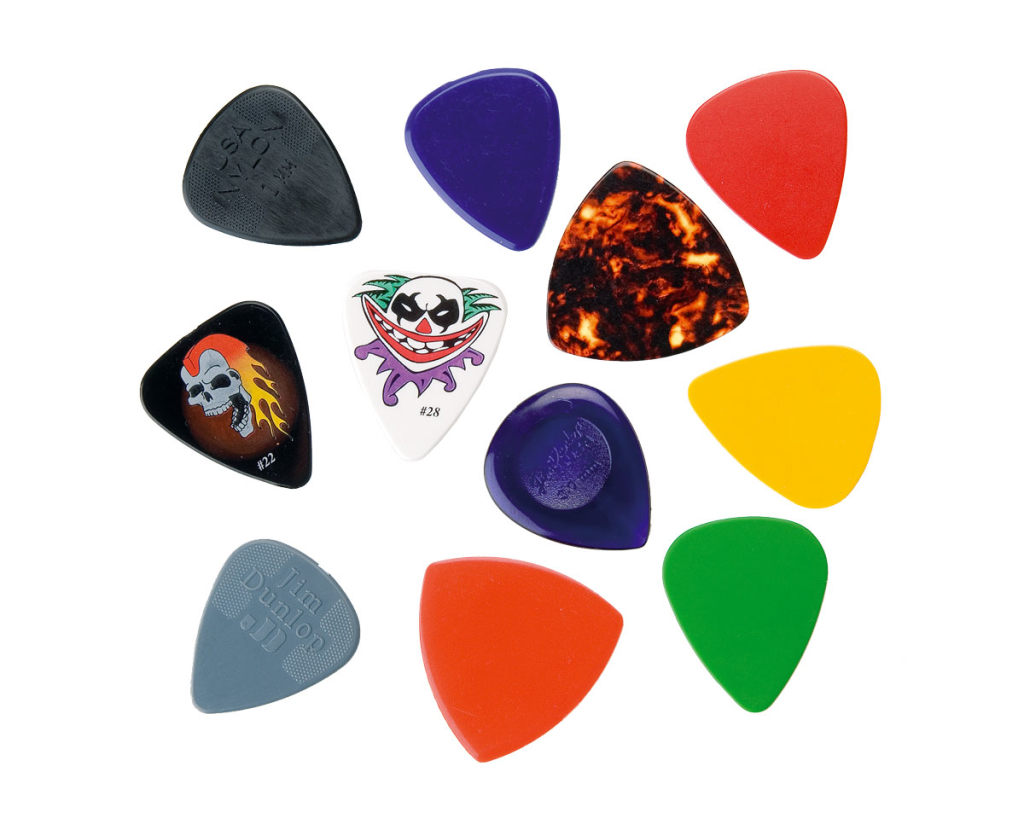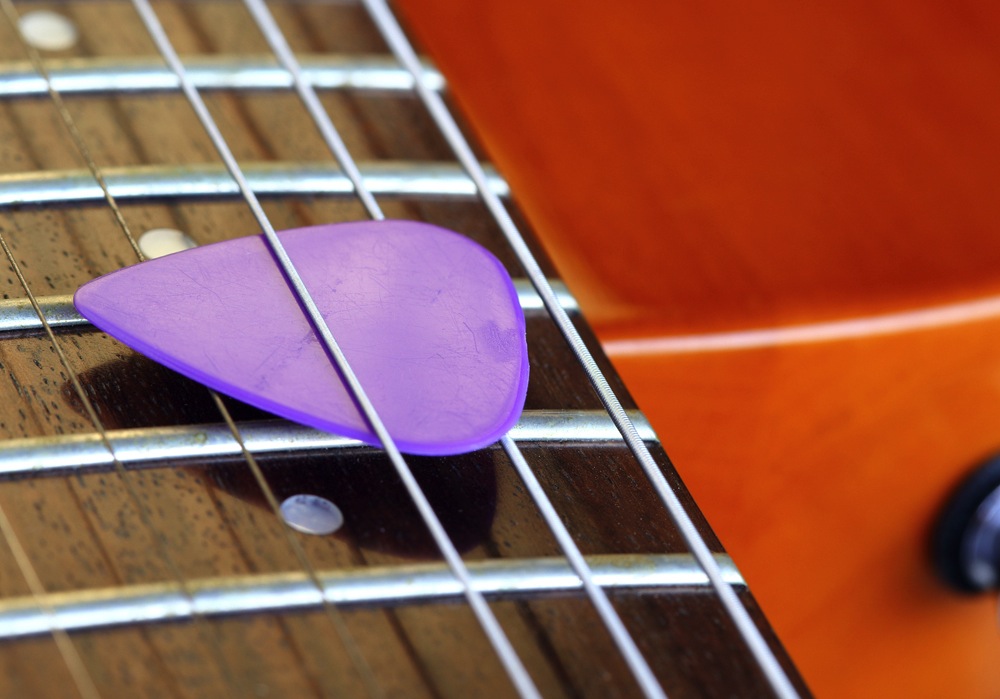How to Pick Your Guitar Pick
At Learn To Play Music, we often hear the question, “what guitar pick should I use?” The choice of guitar pick for most players depends on their style of music, their playing abilities, their preferences for the sound they like to get from the guitar, and the type of guitar they play.
Musicians have used a plectrum or pick to play stringed instruments for thousands of years. Besides playing with the fingers, several different items and materials have been known to be used, such as feather quills, the outer shell casing of a sea turtle (tortoiseshell) and the mezrab, which is a metal wire placed on the finger used to play the Indian Sitar. Guitarists have also been known to shape materials such as bone, wood, metal, amber, stone or ivory to create guitar picks.
Nowadays, picks are made of a variety of materials such as nylon, plastic, rubber, metal, wood, glass, stone, felt or carbon fiber and come in various shapes and sizes.
Sound
Playing the guitar with a pick produces a bright, punchy sound as opposed to playing the strings with the flesh of the fingers. It even sounds more percussive than playing with the fingernails. Playing with a pick also offers more tones and textures than playing with the fingers. Picking closer to the bridge or picking closer to the fretboard give two very distinct sounds which are harder to get and are less pronounced when playing fingerstyle.
Thickness
A heavier pick will generally produce a darker sound than a lighter pick. The thickness of guitar picks are generally measured in millimeters (mm) and normally range from 0.38mm (thin) to 1.5mm (thick). However, some guitar picks can measure up to 3.0mm in thickness. Heavier guitar picks offer more control, but using one requires a bit more skill than lighter guitar picks which are often used by beginners. In general, thin guitar picks are good for rhythm guitar but not great for lead guitar. A thick guitar pick is good for certain types of rhythm guitar and is great for lead guitar.

Playing styles
Thin guitar picks allow a guitar player to strum hard without breaking the strings or playing too loud. They also bend easily and are designed to strum chords, making them the preferred pick for playing an acoustic guitar or for a rhythm guitarist. Thick guitar picks don’t bend very easily and don’t have the crispiness thinner guitar picks have. Thick guitar picks give a guitarist more picking control, which makes them more suitable for single note or lead playing. With specific guitar techniques such as sweep picking, alternate picking, circular picking and economy picking, the heavier pick has the advantage of being more stable and less interrupted by the strings touching the pick which allows for better speed and fluidity.
Music styles
Of course the kind of music you want to play is also a factor. If you like a heavy sound you should use a heavier pick. Heavy metal and death metal guitarists usually use heavy guitar picks of 1.5 mm or thicker. These types of guitar picks are good for digging into heavy gauge strings in low tuning.
Jazz guitar players who prefer a warm round tone prefer heavy guitar picks as well. Generally jazz guitarists use thicker guitar picks which are also smaller in size; they generally prefer these as it allows their picking hand to feel as close to the strings as possible.
Thinner guitar picks tend to rip and tear more often, and wear out faster. On the other hand they glide over the strings and cause a very smooth strumming sound making them more suitable for folk, country rhythm guitar and singer-songwriter styles of music.
Most rock, country and blues guitar players go for the standard-sized pick, which is large enough to grip solidly, avoid accidental finger contact with the strings and can be turned or palmed easily to grind the strings or to allow a quick switch to finger-picking. Some country players also prefer to use a thumb pick and use the hybrid picking technique with both pick and fingers.
In summary, unless you play finger-style exclusively, the guitar pick you choose will have a great effect on your playing. The thickness of the pick affects the sound of your playing, so you should think about the sound you want and simply do what all guitarists have done which is to try out many different guitar picks until you find one you like best.
About the Author
Daniel Coffeng is an honors graduate from the Guitar Institute of Technology and is a Los Angeles, CA based performing guitarist, freelance studio musician and music educator specializing in modern contemporary guitar.
– Continue learning with Learn To Play Music at LearnToPlayMusic.com






























Hiya, A very good blog, I have to admit this is really nicely written, this place definitely needs posters like you. Filling the forum with some good tips and information, I did follow a couple of your posts, they been relevant and important points were elaborated. I must say we should always be willing to post within our best knowledge to support people. Really love your site.
Great post, there’s definitely a lot to be said about one of the most overlooked pieces of guitar gear. If anyone is looking to fine-tune their tone, a simple pick is a great way to start.
Thanks for sharing!
I totally agree that guitar picks are the most overlooked element to guitar. I am a guitar teacher and I see so much improvement from my students simply by helping their guitar picking technique.
I also refer my new students to this webpage. I think it is really helpful.
Thank you so much!
Justin
We’ve all been there – we know a certain genre but don’t know what kind of thickness or gauge for the plucking tool to choose.
Hey there, really informative post about choosing the best guitar picks. I have been using the same plectrum for years however I have now decided to try as many different picks as possible to see if my first choice (yellow Tortex) will still remain my favorite.
Thanks for the useful information. What is the range of thicknesses that would actually be considered by most players as “thin”, as “medium” and as “thick”?
Hi Eve,
Thin picks are anything up to approx 0.7 mm in thickness.
Medium picks are between 0.7 mm to 0.85 mm in thickness.
Thick or heavy guitar picks are anything from approx 0.85 mm and up.
Hope that helps…